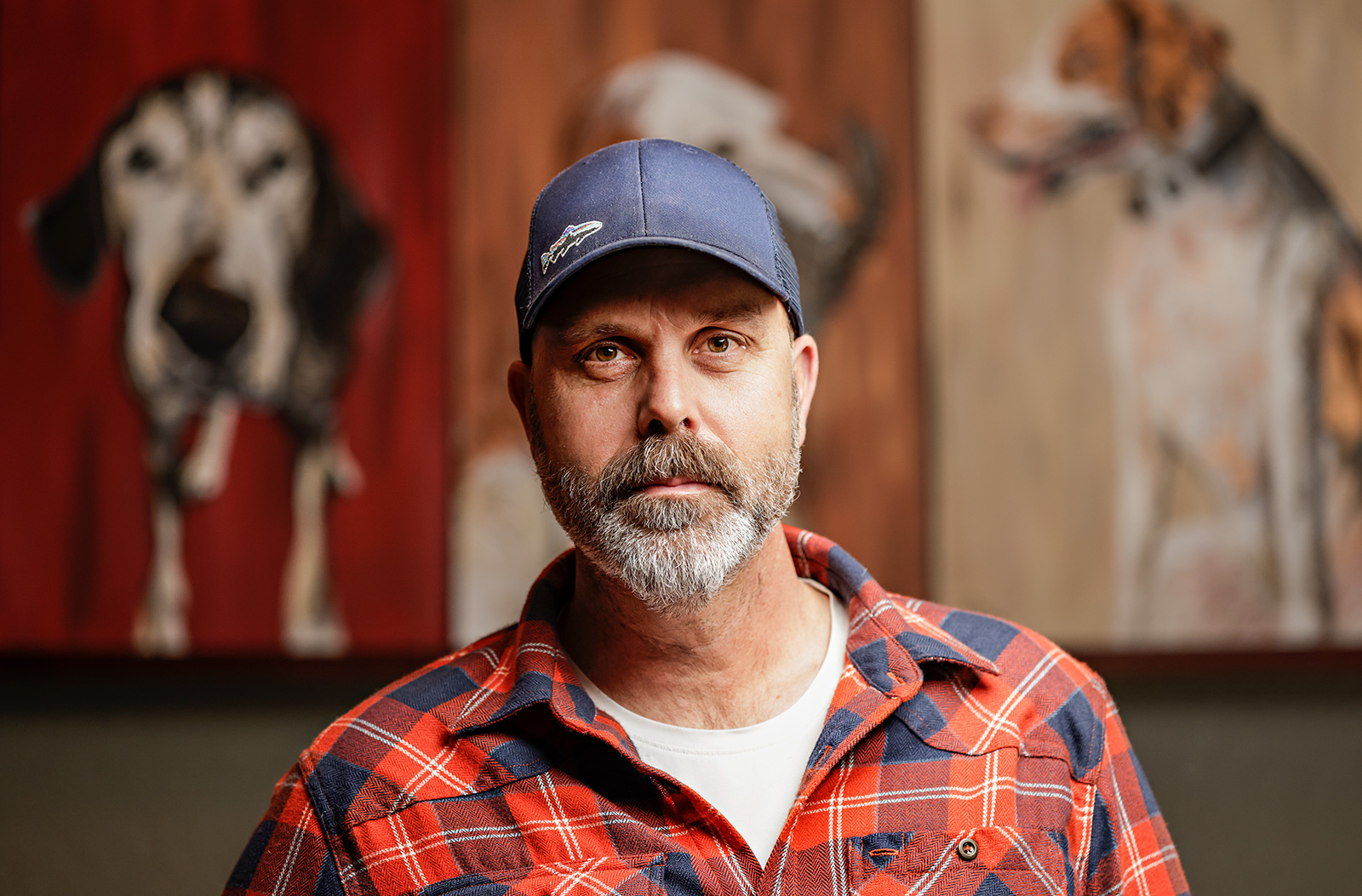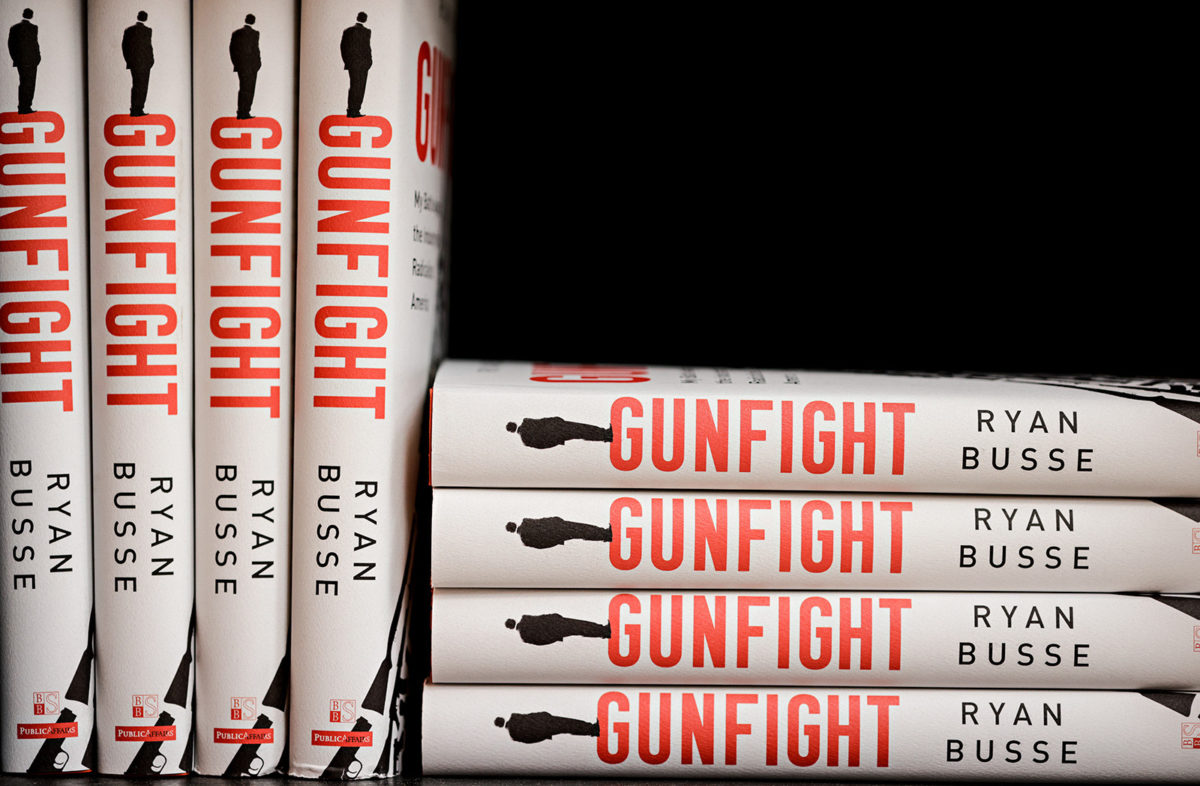‘Gunfight’ Author Rings the Alarm About Gun Culture in the United States
The book published in October details the experiences of a former gun industry executive who lives in Kalispell
By Mike Kordenbrock
More than three months removed from the publication of his book “Gunfight: My Battle Against the Industry that Radicalized America,” Ryan Busse said he continues to hear on a regular basis from people, mostly gun owners, thanking him in person, by email, and on social media for speaking up about an industry they believe has lost its sense of reason.
The local author and former sales executive for the firearms company Kimber, which has an office in Kalispell, said that as the book’s October publication date approached he anticipated the possibility of security risks, trolling, and “a lot of ugliness.”
The supportive messages, some of which he keeps on his phone, continue to buoy him as he seeks to keep the conversation going on an issue he believes is of critical importance to the future of the country. From inside the industry though, Busse said he hears little, including from people he knew and worked closely with for years.
“I’m not getting mail bombs, but I’m not getting a lot of Christmas cards either,” Busse said recently.
Busse credits himself for the sales of millions of guns during his time in the industry, with an emphasis on his efforts to help sell Kimber’s 1911 pistol. Since leaving Kimber, where during his tenure he was nominated multiple times for the Shooting Industry Person of the Year Award, Busse has worked as an environmental advocate, as well as an advisor to the U.S. Senate Sportsmen’s Caucus and the presidential campaign of Joe Biden.
Busse’s book ultimately argues for a return to what he believes is a more reasonable culture of gun ownership that previously existed in the United States, and a focus on bringing about policy, like universal background checks, which he believes would be beneficial for those who own guns and those who don’t.
He suspects the relative quiet from within the industry is to some degree a result of what he describes in the book as an authoritarian culture driven by the National Rifle Association, which he says forbids any sort of criticism or questioning without damaging one’s career.

That intolerance of second-guessing is something Busse traces back to the Brady Act and subsequent assault weapons ban, which passed with some support from Republicans, including former President Ronald Reagan who was no longer in office at the time. The bill was named after Reagan’s press secretary who had been shot in the head during an assassination attempt on the president.
The lesson the NRA took away from those legislative defeats, according to Busse, was that “It had chipped away at defectors, but it failed to demand 100 percent loyalty.”
In the firearms industry that kind of legislation has consequences in terms of sales, profits, and jobs. At one point Busse describes how decades ago he helped organize a crippling boycott of Smith & Wesson after the company made a deal with the federal government.
“There were times during the boycott effort that I really believed there was an existential threat, but why did I believe it, and did my fear have any basis in fact?” Busse writes. “While it was happening, I don’t think I ever stopped to think about it, and I never heard anyone else in the industry talk about it either. No one ever questioned any of the NRA assertions. Maybe I was fighting someone else’s fight. Maybe there were people who depended on willing warriors like me.”
Busse traces his relationship with guns back to his youth growing up on a Kansas ranch. Guns were something that connected younger and older generations in his family, but were also treated with a kind of seriousness that emphasized the need for responsible use. A sportsman, Busse describes the way he and his brother would target shoot and hunt, and how the NRA and other major players in the gun industry focused their outreach, media and advertising on people like his family who had an emotional connection to firearms they often associated with hunting and marksmanship.
Over the years though, that emotional connection began to become twisted, according to Busse. Spiking gun sales in relation to things like mass shootings, Democratic presidents (former President Barack Obama is the focus of the chapter titled “The Best Gun Salesman In America”), racist fears, and fear of any perceived legislative attempt to limit the options of gun owners have all become ingrained in the NRA’s business strategy that has become deeply intertwined with the rest of the industry, according to Busse’s book.
Describing the industry reaction after the Brady Bill, Busse says that 1994 “had exposed the fear-driven boom, and fear was still an obvious and powerful source of revenue” by the time the Columbine school shooting happened.
“The NRA developed a system that could capture the sales upside of gun-control politics without having to wait on the long legislative process. To make it work, the entire country would have to be constantly held barely below the boiling point as the NRA waited for the next triggering event. When it came, just a few assertions and accusations could make the situation boil over,” Busse writes. “For that to happen, the NRA needed constant heat. In fact, it had started priming the reaction to the Columbine massacre three years earlier at its 1996 national convention, an event conspicuously held on the first anniversary of the Oklahoma City bombing.”
Busse believes the continued manipulation of resentment and fear helped promote an ideology among some gun owners in which provocation and intimidation are essential elements, which he says has since been adopted by former President Donald Trump. The opening scene of the book features a man with a Make America Great Again Hat and a holstered pistol confronting Busse’s school-age son at a Black Lives Matter really in Kalispell. Busse describes his son being screamed at and poked in the chest on a day in which dozens of visibly armed people showed up in opposition to protesters.
“What were those guys thinking? What, were they going to shoot high school kids? I just think we need a big deep breath and we need to stop normalizing stuff like this.”
Further contributing to Busse’s concerns are industry efforts to market tactical-style guns and gun components to people, with the promise in some cases of letting people live out combat fantasies or reclaim their manhood.
In Busse’s opintion, the Sandy Hook shooting, in which 20 children and six adults were shot to death in an elementary school, is “particularly illustrative,” of irresponsible marketing strategies in the gun industry. Before the shooting Bushmaster had promoted its AR-15 rifles with the slogan “Consider your man card reissued.”
“I think it’s not an accident that a single mom in Connecticut had a really troubled teenage boy who loved to shoot things on screens, and she buys this gun for her and him to use, as if he’s going to get his man card back. And then he uses it in a school,” Busse said. “And I think, how is that not so excessively irresponsible for Bushmaster to advertise that gun that way? People want to say ‘You just want to take people’s guns away.’ That’s not my point. My point is why do we as gun owners think that’s okay? I don’t. And I think a lot of people don’t.”
Ryan Busse will be discussing “Gunfight” on Feb. 1 at 6 p.m. at Kalispell Brewing Company as part of an event with The Bookshelf bookstore.